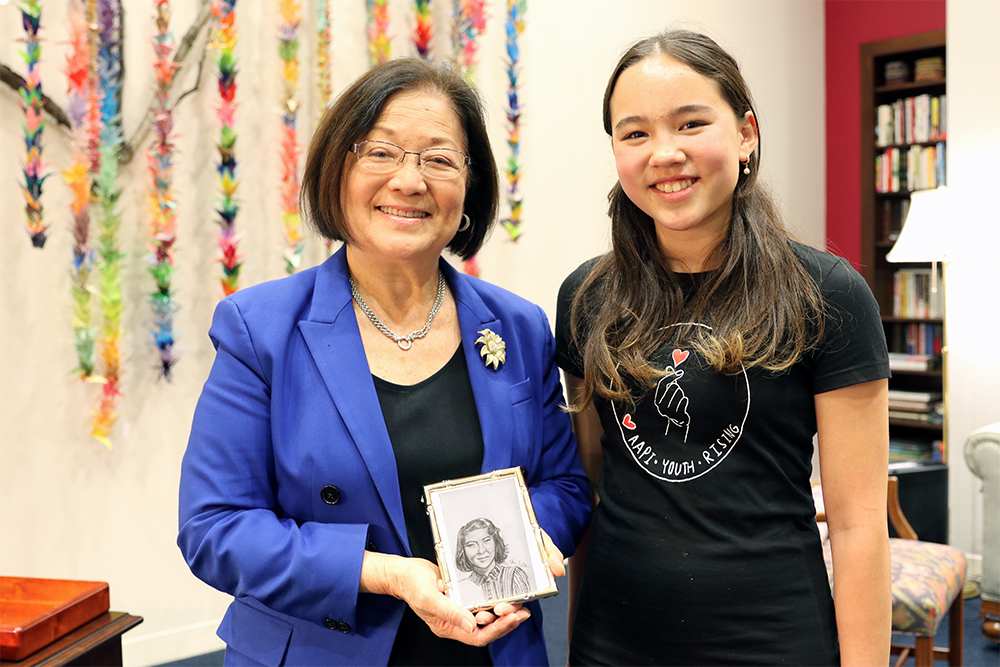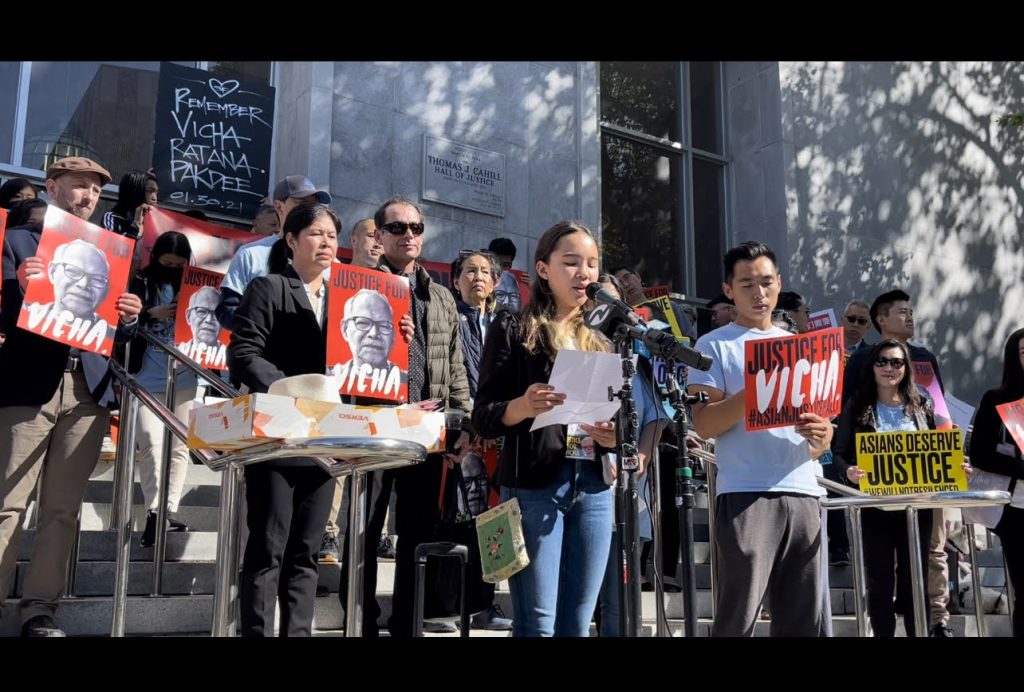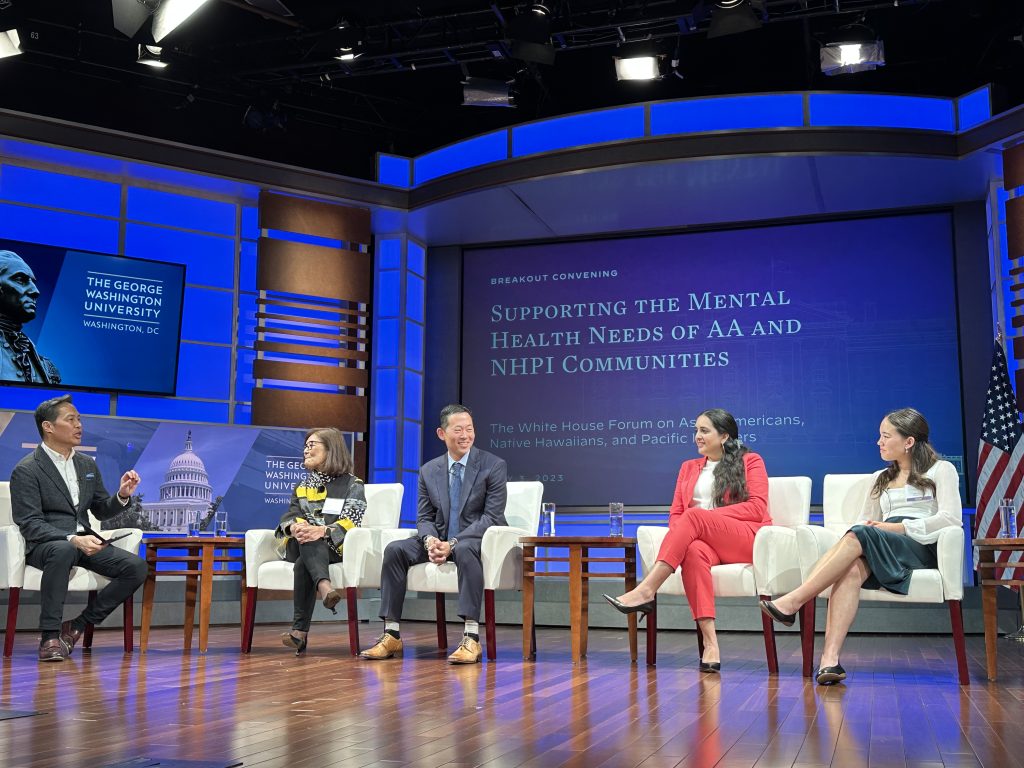Shifting the Conversation on AAPI Ethnic Studies
Mina Fedor’s organization, AAPI Youth Rising, strives to uplift the community and implement ethnic studies classes across the U.S.
 (AAPI Youth Rising founder Mina Fedor visiting Senator Mazie Hirono (D-HI). | Courtesy of AAPI Youth Rising)
(AAPI Youth Rising founder Mina Fedor visiting Senator Mazie Hirono (D-HI). | Courtesy of AAPI Youth Rising)
Mina Fedor demonstrates that you are never too young to take action and make a difference through her organization AAPI Youth Rising. Inspired to start AAPI Youth Rising in 2020 after witnessing an uproar of Asian hate across America, she has been striving to amplify the voices of marginalized communities ever since.
Through actions, AAPI centered art, blog posts and short educational videos, her organization has brought a sense of comfort to the community in times of great violence and bigotry.
YR Media sought out Fedor to take a deeper dive into her organization, the importance of ethnic studies and how we can be advocates to communities other than our own.
This interview has been edited for clarity and length.
YR Media: Thank you for being here. It’s so nice to finally meet you and put a face to a name. Can you introduce yourself? Your name, age, pronouns, and what you do?
Mina Fedor: My name is Mina. I am 15 and I use she/her pronouns.
YR: Can you tell me more about AAPI Youth Rising?
MF: AAPI Youth Rising is a nationwide student-led nonprofit dedicated to taking small actions in support of Asian-American youth and youth in general. The main things that we’re focusing on are education, promoting diverse voices, and providing a space for youth to share their experiences and talk about their opinions. We have a lot of projects in store and we’re really excited to do more. We have over 90 members — 90 youth leaders nationwide in over 20 states. A lot of people in the Bay Area, but others around the country, which is really exciting for us.
YR: Can you tell me about your position at AAPI Youth Rising?
MF: I founded this organization two years ago and a lot has happened since then. I started this thing in seventh grade and I was like a little child. And now, a lot changes at this age. You see yourself changing a lot and the people around you. In the beginning, it was just me and four other friends. Now we have like a solid board of seven people, which is really, really exciting. Everyone has their own designated role and everyone works so hard. My team is really incredible. They’ve devoted so much of their time to this cause and this mission, which is really inspiring to see.
YR: What are your responsibilities within the organization, and what does your work look like?
MF: For me, it’s a lot of organizational stuff, getting everyone together and a lot of managing. Other positions include a lot of emails, messaging, organizing, and talking. There’s a lot of stuff that’s happening, but I think the hardest thing is probably communicating with others.
YR: What is the most significant thing that inspired you to create a Youth Rising?
MF: What inspired me was my first time speaking out about this issue of rising xenophobia towards the AAPI community and the scapegoating of Asian-Americans. Back in 2020, at the very beginning of the pandemic, my mom was coughed at while walking down the street in our neighborhood. I really wanted to say something about that and educate my classmates. So I spoke out at a virtual assembly, which was my first time raising my voice for anything. I was really terrified — I was only in the sixth grade. I wanted to provide a platform for youth to share their voices and talk about the issues that they’re facing. Like gun related violence in their schools and things that they felt like people weren’t really listening to.

YR: I’m sorry you experienced all of those things. And it’s also really sad how normalized it has become, right? So how can non-AAPI folks best advocate for the API community and combating anti-Asian hate?
MF: Just educating yourself on the history of Asians in America is probably the best thing you could do. And learning about the different stereotypes that the AAPI community faces. I think that everyone, all communities, need to learn as much as they can about other minority groups. So I think education is really the answer to that. To better align yourselves with other communities. I still have a lot of learning to do, myself about other minorities and their histories.
YR: I still have so much learning I have to do and I want to do as well. Education is key, right? So how can marginalized communities, including the AAPI community and others, become advocates for each other?
MF: A lot of the issues that we have are shared. I guess a lot of the overarching themes of what we’re advocating for are also very similar. Recently, I know we’ve been more of a historically AAPI group, my organization. But we’ve been trying to open it up to other allies. So that we can just get the overall youth perspective rather than the AAPI youth perspective.
I think learning about how the government works is really important — who represents you on a local level, state level and federal level. If you’re under 18, obviously can’t vote yet, but it’s still important to learn about how to register. You can do early registration for voting and many other things as soon as you turn 16. There are a lot of resources online about how these different policies are passed in the U.S.
YR: Do you think the standard history classes right now in the U.S. accurately represent the AAPI community?
MF:The general history curriculum that a lot of youth receive is from a white male perspective. And it has been like this forever. It’s hard to reverse that. But looking at history through different lenses and different perspectives is important, specifically for the AAPI community. Asians are not mentioned at all a lot of the time. And if we are, it’s only when we hear about events like the Japanese internment camps or the Chinese Exclusion Act. But more often than not, people learn about those two things. And then the community is never mentioned ever again — even though Asian Americans have actually been here for a very long time.
YR: What changes can be made then?
MF: There’s a lot of changes that can be made on a legislative level and AAPI history policies that have been passed in states, which is really amazing. There was one passed in California a year and a half ago that we actually were co-signed onto that was advocating for ethnic studies mandates as a high school graduation requirement in public schools. That was really exciting. The bill that we saw passed in California is going into effect in 2029, about six years away.
One of our recent initiatives has been to teach short AAPI history lessons in schools, in different classrooms. We’ve reached classrooms nationwide and it’s been a really exciting initiative that we’ve been very happy to take part in. We also made a video, a short lesson on our website that encompasses a lot of the elements in our course that can be more easily accessible.

YR: Why is it so important for AAPI youth to tell their own stories?
MF: I think a lot of the time there are these groups of youth where it’s mostly adult-ran. Not a lot of youth voices are actually amplified in this process — because adults just end up talking about youth. But they don’t give a space for them to talk about their own experiences. I think it’s really important for them to give us a platform to speak on issues. We have our own individual and unique perspective, like growing up online and all of these different factors, that are so unfamiliar to people five years older than us.
YR: Can you share some organizations or resources that can be helpful for folks?
MF: I think Act to Change is a really amazing resource. They do a lot of anti-bullying related advocacy work. They’re trying to talk about youth, especially AAPI youth being bullied, providing different resources for that. There’s also a resources page on our website where there’s a lot of organizations. Also there’s the Alliance for Healthier Generations. They’ve done a lot to help. There are all sorts of resources like AAPI history and education, in addition to mental health advocacy.
YR: Do you have anything else you’d like to tell me or anything I’ve missed?
MF: If anyone listening is interested in joining our organization, we have our form on our website. We have an action corner and a blog corner where we’re just trying to get more AAPI voices. We have a lot of like committees that we just created. So there are opportunities to submit to the blog and write pieces every month. We have our art corner for AAPI art to be published.
If you find a specific piece of legislative action that you want to push, we have an action corner for that. We have people working with social media — if we want to work on our social media engagement or creating posts and things like that. I don’t know if there’s a lot that new people joining can do. Also, it’s great for speaking opportunities and trying to get different youth voices out there as well. There’s a lot of public speaking engagement opportunities in-person and online.
Kami Bataclan, (she/her) is a high school student from the Bay Area.
Edited by shaylyn martos